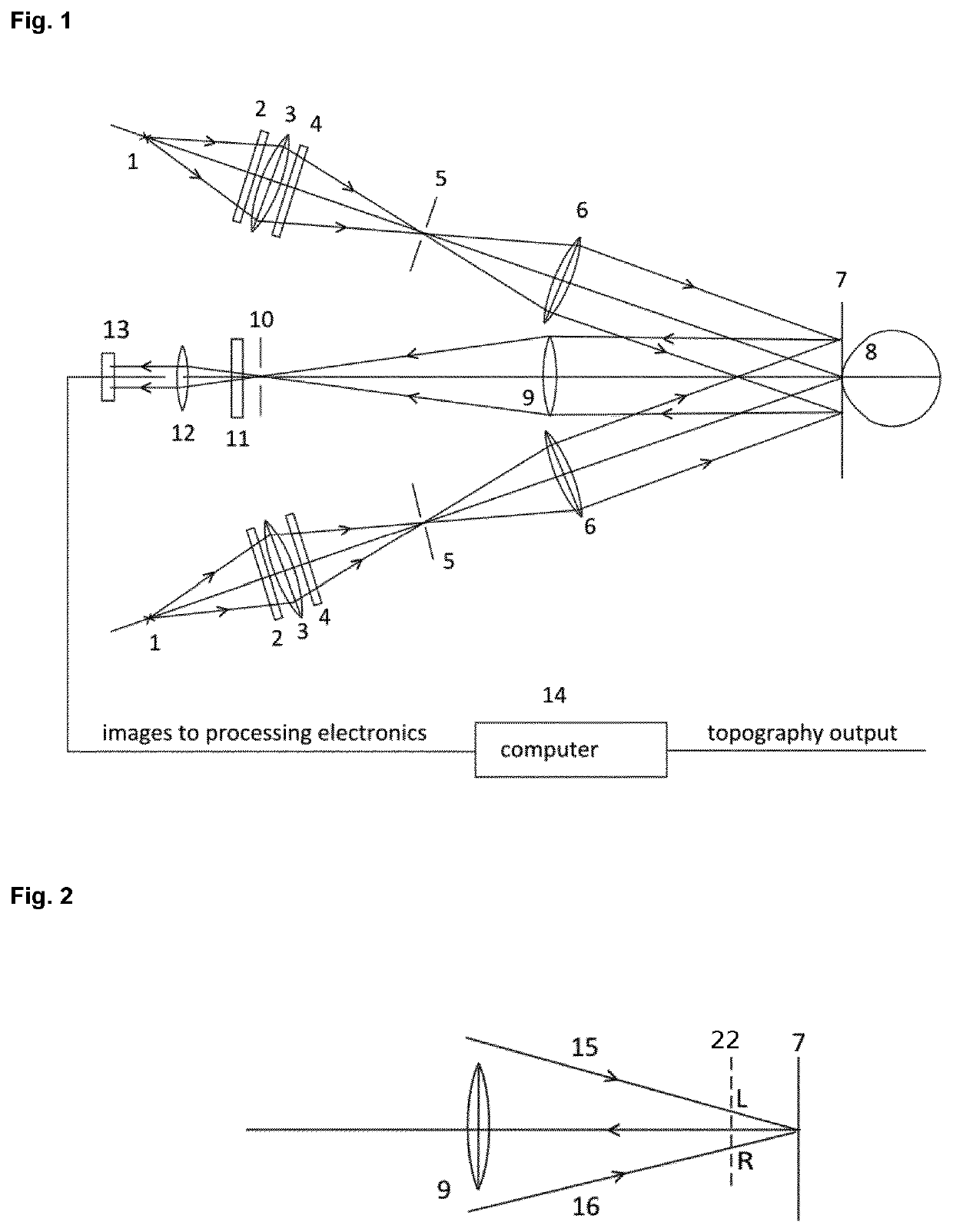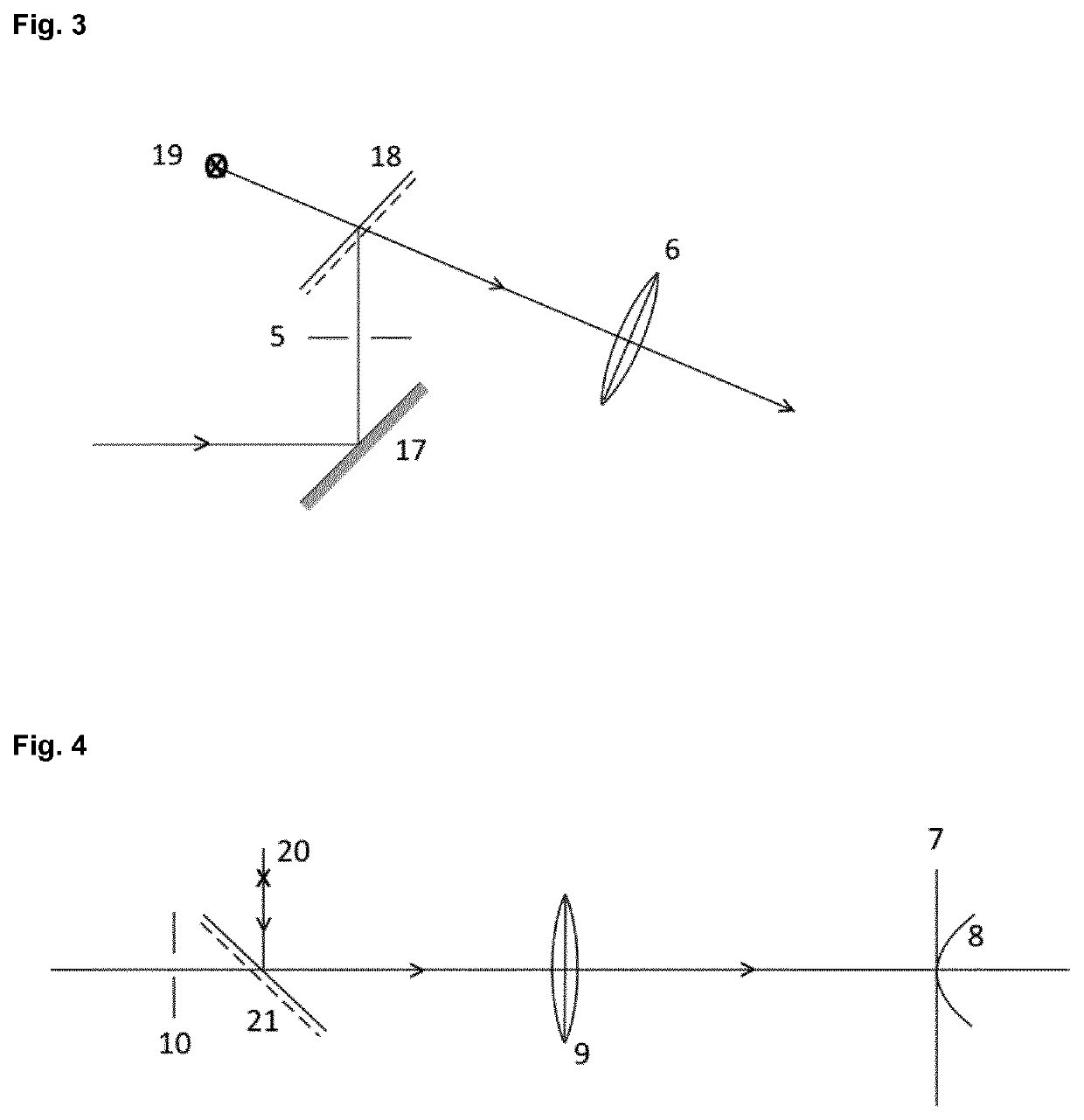Eye surface topographer
a topographer and eye surface technology, applied in the field of optical systems, can solve the problems of less accurate measurement of placido disk topographers, limited measurement area of placido instruments, and inability to measure scleral surfaces with different optical properties, and achieve the effect of convenient focus and improved accuracy
- Summary
- Abstract
- Description
- Claims
- Application Information
AI Technical Summary
Benefits of technology
Problems solved by technology
Method used
Image
Examples
Embodiment Construction
[0050]The present invention aims to provide a new system for determining the topography of a diffusely reflecting curved surface. More in particular, the present invention relates to an optical system for determining the topography of the front surfaces, cornea and sclera of the human eye. Said optical system is also called the Eye Surface Topographer (EST). The system according to the present invention is here further described in detail based on the presented figures.
[0051]FIG. 1 shows an outline of the EST system in its most elementary form. The following components of the EST topographer system can be seen in FIG. 1: (1) is the projection source, which is a semiconductor diode, and thus can be a LED or a blue diode laser, the central wavelength of which is, for example, smaller than 500 nm; the spectral filter (2) blocks all radiation with wavelengths above, for example, 500 nm; the condensor lens (3) projects an image of the source on the slit diaphragm (5); the component (4) i...
PUM
 Login to View More
Login to View More Abstract
Description
Claims
Application Information
 Login to View More
Login to View More - R&D
- Intellectual Property
- Life Sciences
- Materials
- Tech Scout
- Unparalleled Data Quality
- Higher Quality Content
- 60% Fewer Hallucinations
Browse by: Latest US Patents, China's latest patents, Technical Efficacy Thesaurus, Application Domain, Technology Topic, Popular Technical Reports.
© 2025 PatSnap. All rights reserved.Legal|Privacy policy|Modern Slavery Act Transparency Statement|Sitemap|About US| Contact US: help@patsnap.com


